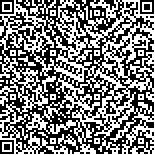下载中心
优秀审稿专家
优秀论文
相关链接
摘要

遥感技术的日新月异以及考古学的新目标、新需要不断出现, 利用遥感技术进行田野考古研究的工作已经取得长足进展。回顾了遥感考古的历史, 介绍了遥感技术在大遗址探测中的优势与作用, 以当前遥感考古与虚拟考古研究为例, 对遥感考古发展中面临的问题进行了概述。
Archaeological remote sensing is the archeological research using remote sensing data as data sources, and at present it is mainly used to investigate the distribution of archaeological sites and predict the existence of above ground or the underground ancient relics and their distribution pattern of detection, the space mapping of the ancient ruins, and the virtual recovery of ancient monuments and their background. Remote sensing technology is able to quickly and efficiently find the distribution of information of ground and underground ancient relics. It plays a significant role in the present archaeological research, and has increasingly become an essential process in large-scale archaeological investigation, especially pre-site inspection. Significant progress has been made in archaeological field investigation due to the rapid development of remote sensing technology, as well as the emerging of the new goals of archeology, the new needs and the applications of remote sensing technology. This article reviews the history of archaeological remote sensing, and introduces the advantages and roles of remote sensing technology in the detection of large-scale sites, and some research instances such as the current archaeological remote sensing and virtual archaeological research, and finally surveys the problems in the development of archaeological remote sensing.

